The sound of music movie kind of immortalized solfege for so many people out here! The hills were filled with the sound of Julie Andrews teaching us the do re mi fa so la ti do’ notes.
Let us look into what is solfege, It’s notes for beginners, solfege syllable hand signs and why is important.
Did You Know?
Solfege is also called as Sol-Fa, Solfa or Solfeo.
What Is Solfege In Singing?
In simple words, solfege is a system that has musical notations used to teach sight singing and ear training. Each notes has a certain pitch assigned to it. In that way, solfege’ meaning would be assigning syllables to the notes of a musical scale. This helps singers and learners while practicing pitch recognition, intervals and a melody. So one could say that “solfege is a system that enables musicians to quickly learn pitch.
Here is a list of solfege syllable,
- DO – Tonic (first note)
- RE – Supertonic (Second note)
- MI- Mediant (third note)
- FA – Sub-Dominant (fourth note)
- SOL or S0 -Dominant (fifth note)
- LA- Submediant (sixth note)
- TI – Leading Note (seventh note)DO – Tonic (eighth note)
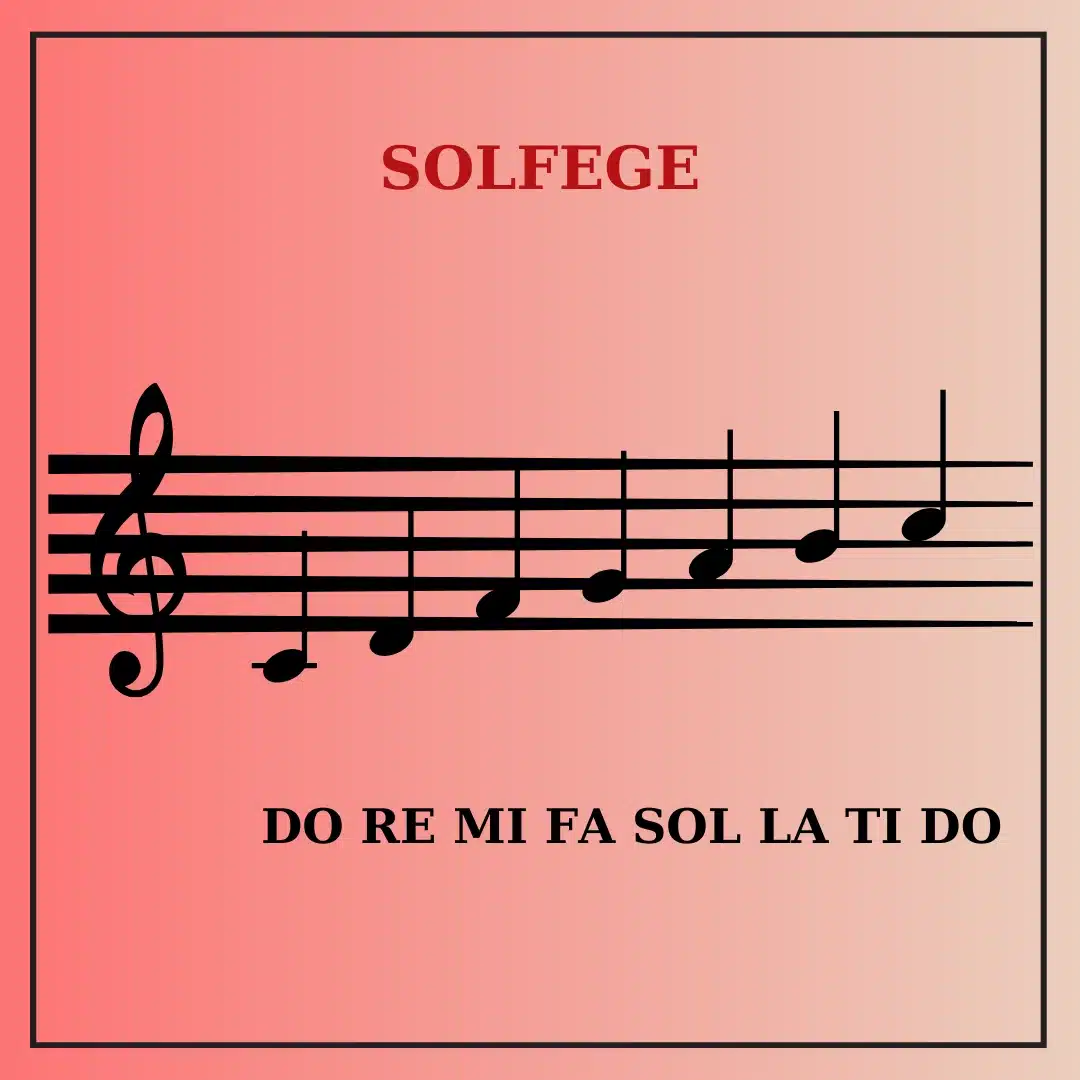
What Are The Benefits Of Solfege Singing?
My students often ask me “Why is solfege important?” or “Why do singers use solfege?” Here are the reasons why I often stress on learning and practicing solfege notes for beginners.
Pitch Recognition
We now know that the key aspect of solfege meaning is to assign the ‘do re mi fa so la ti do’ syllables to the notes of a musical scale. This helps singers specifically incorporate pitches and intervals by associating these said syllables with specific notes. This in turn helps them to recognise pitches and reproduce them accurately.
Sight Singing
Hands down! solfege notes are such a valuable tool for sight singing specially for beginners! Learners can easily develop the ability to identify and sing melodies and intervals by ear.
Ear Training
Practicing solfege, singers can develop the ability to identify notes in a melody, harmonies just by listening by ear. This skill is absolutely essential for a musician. Checkout the article by ear training to learn everything you need to know about the technique.
Voice Control
Arpeggios and scales are often used in solfege exercises that help in improving vocal techniques, breath Control as well as the vocal Range.
How To Read Solfege?
We know that do re mi fa so la ti do notes are the basic syllables. Remember that these syllables represent an octave in a diatonic scale. The most important take away point is that ‘syllables adjust according to the scale we choose’, as solfege meaning advocates. Lets look into how to read this.
Identify The Key
The first thing to do before trying to read solfege notes, is identifying the key in which it is written.
For example, if the C major scale is used, DO corresponds to C, RE to D and so on.
- C- DO – Tonic (first note)
- D- RE – Supertonic (Second note)
- E- MI- Mediant (third note)
- F- FA – Sub-Dominant (fourth note)
- G- SOL or S0 -Dominant (fifth note)
- A- LA- Submediant (sixth note)
- B- TI – Leading Note (seventh note)C- DO – Tonic (eighth note)
Musical Notation
On a Sheet Music, each note will be paired with a corresponding solfege syllable. For example, E on the staff will be sung as MI, C on the staff will be DO. Understand of notation is required to read solfege effectively.
Understanding Intervals
I used solfege syllable charts to learn Intervals. Now, What is Intervals in music? Intervals are the distances between two notes.
For example, Do to Mi, its an interval of Major Third (2 whole steps)
Do to Sol, its an interval of Perfect Fifth (4 whole steps). These are steps you need to follow to effectively read solfege. Now lets look into what are the exercises.
Solfege Exercise For Beginners
Play along on a virtual keyboard or piano. Sing Do-Re-Mi-Fa-Sol-La-Ti-Do and play the major scale in the key of C. Sing ranges from high to low. Try going around the scale step-by-step after you can sing the scale in tune on your own (without the piano’s assistance).
Here are some solfege exercises to get familiar with solfaggio syllabus and to help learn this technique for beginners.


How Was Solfege Formed?
An Italian Theorist called Guido D’Arezzo of the 11th century came up with the idea of the solfege meaning as a method of teaching basic melodies to singers rather quickly. The six pitches Guido established helped most of the singers in those days who were clueless about notation or how to read or write music (Sight-Singing Techniques) Ut Re Mi Fa Sol La Si.

Did You Know?
Guido established 6 pitches namely Ut Re Mi Fa Sol La Si !
Guido created a universal system by giving names to these 6 pitches. The idea of six pitches hit him from the tuning of a 6-stringed lyre. Guido used the intervals- tone-tone-semitone-tone-tone.
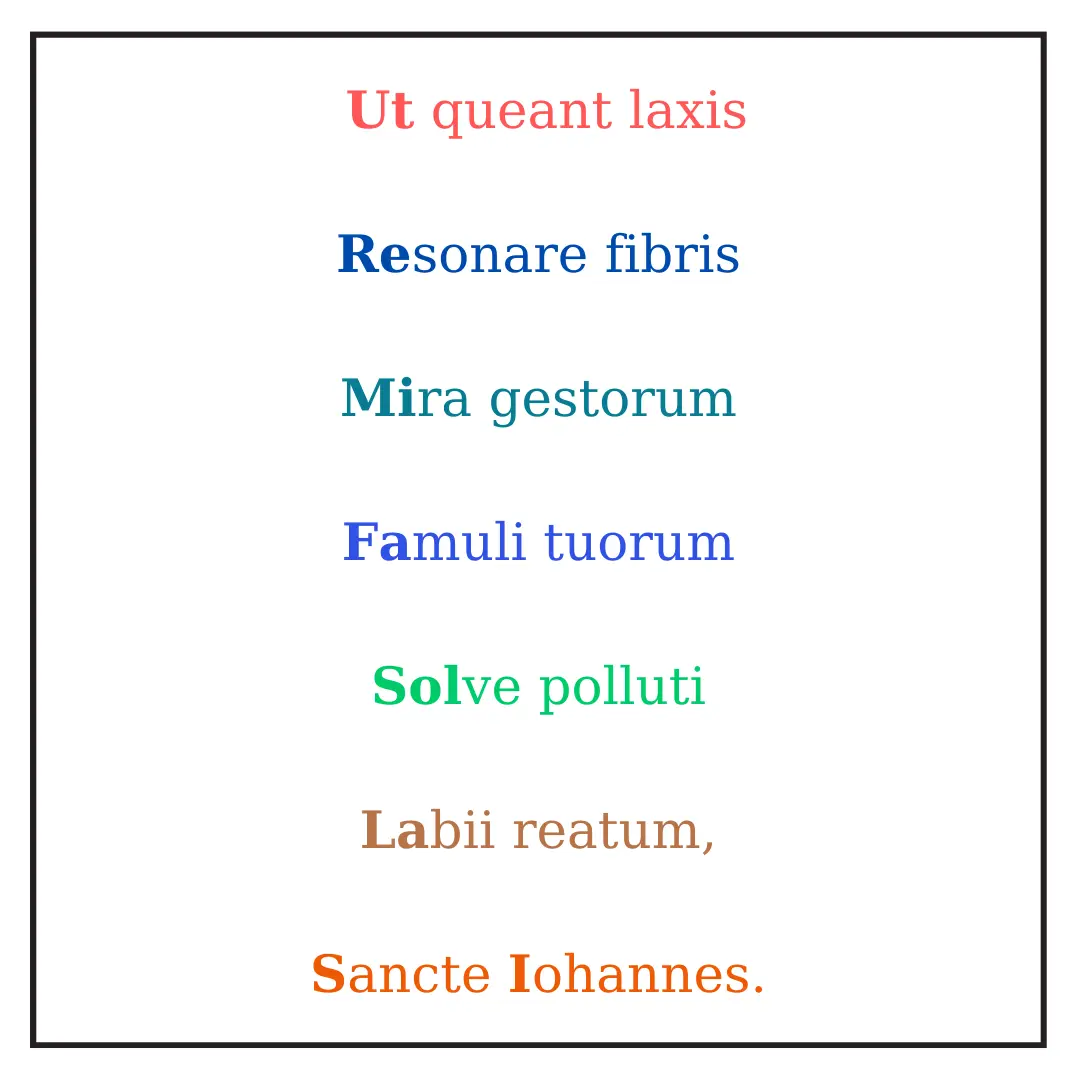
An old Gregorian chant to St. John the Baptist gave him the idea of naming these pitches with these syllables. He used these syllables to represent the symmetrical design of the hexachord like below.
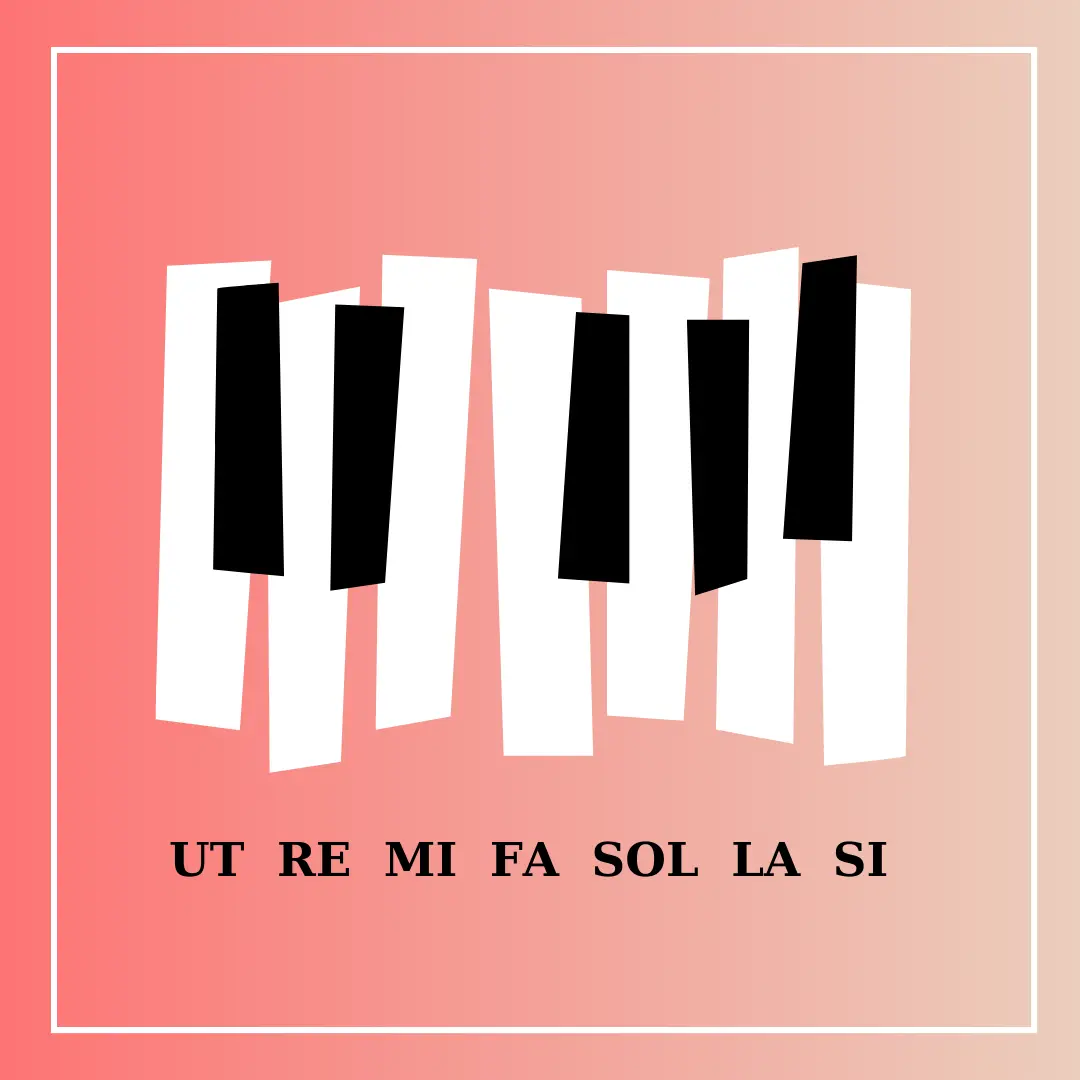
His choice of syllables is a mnemonic for a specific chant, a hymn to St. John the Baptist called Ut queant laxis. Each corresponds to the opening sound that sets off the several musical sections in the first verse.
The Solfege: Do Re Mi Fa Sol La Ti Do!
This resulted in the development of the solfege syllables hand sign system, as well as widespread use of it in music instruction. It allows musicians who do not play keyed instruments to appropriately depict major and minor scales by employing hand signals.
This led them to coordinate a physical and mental link, as well as solfege practice and singing to better understand the relationship between the notes. So, a solfege note for beginners begins knowing the two types that are in practice today.

Did You Know?
In several places like Spain, Portugal, France, Italy, and Latin America solfaggio syllables are used to name the pitches.
Types of Solfege
There are essentially two types of solfege in music.
- Fixed Do– syllables represent fixed Do
- Moveable Do – syllables signify degrees of the scale beginning with the tonic note.
Fixed Do
Fixed Do is a system of solfege, or a way to learn musical scales, that assigns each syllable to a specific pitch.
Basically think of the how the piano can only play the note C, which we call the note C. exactly like that Do” refers solely to the absolute pitch, C. In the Fixed Do system note names, people will always refer to C as Do.
This lets you know that you need to change the syllables and hand signals to indicate flats or sharps, if you’re going to sing or refer to a different musical scale using Fixed Do. I find this rather interesting!
Movable Do
Movable-Do is a pitch notation technique in music theory that uses the syllables “Do,” “Re,” “Mi,” and so on to indicate the degrees of the diatonic scale. Unlike Fixed-Do, the pitches of these syllables shift depending on the key or tonality of the music.
Most Pieces of Music requires frequent key changes and that is where ‘Movable do’ comes into play. Do is always the First Degree of the scale regardless of the key. The remaining syllables are then adjusted to meet the measure of the scale we are in. This utilizes solfege minor scale techniques to play all the minor scales, major scales, or pentatonic scales.
We base the pitches of solfaggio syllables in movable do type on the key that we use. This would imply that do corresponds to the first degree of the major or minor scale in that key.
The remaining syllables, re mi FA sol la TI, denote the various scale degrees.
“Do Re Mi Fa Sol La Ti Do” in the movable do pitch notation system represents the pitches of a diatonic scale .
The Movable Do system lets you play in any key and this makes it easier using the concept of relative pitches. Here is an example of C major and G major. Although the notes of the sheet music change, the solfege syllables remain the same.
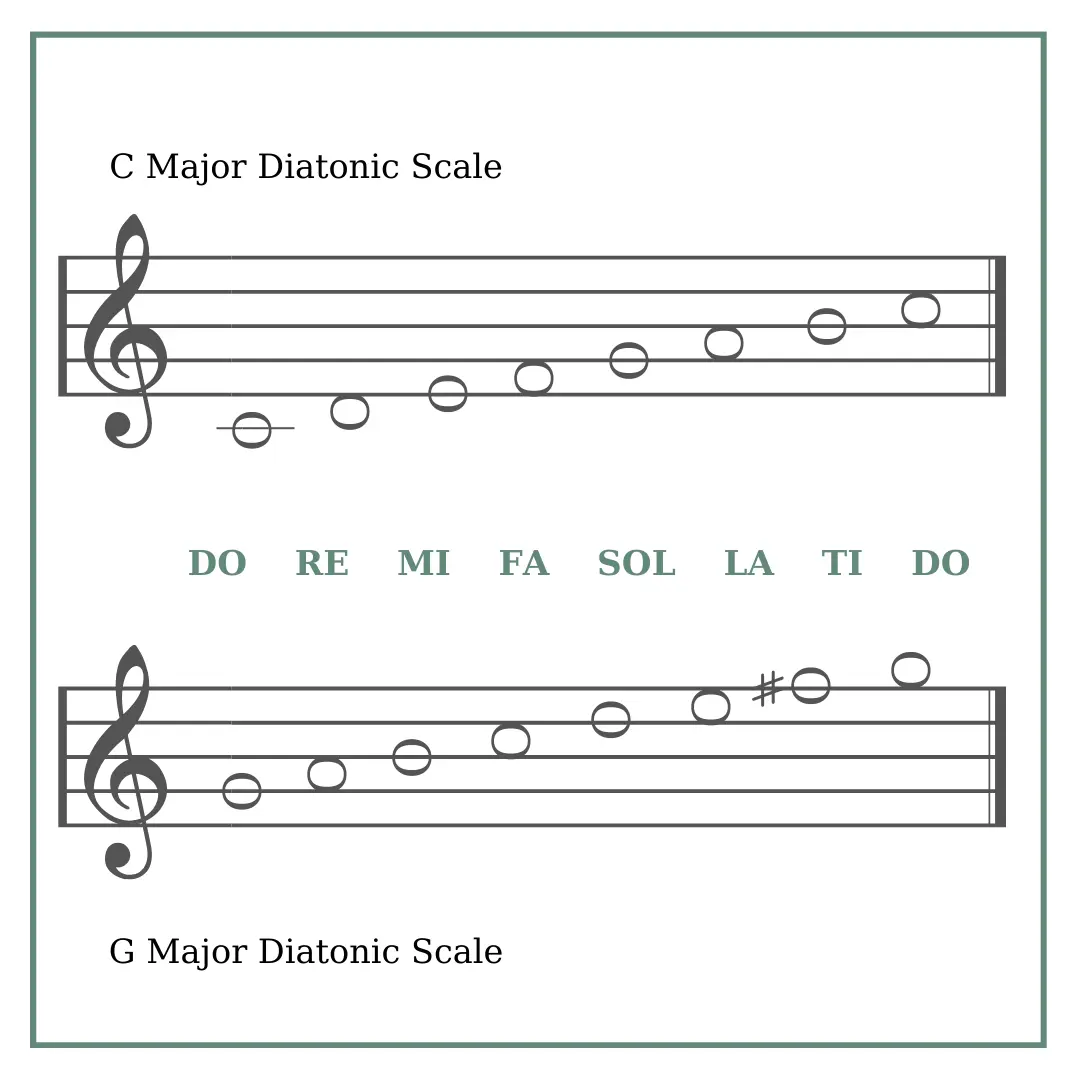
Notice that the same C major scale written in fixed do had its “Do” fixed on C. Here the not C is the absolute pitch. But the C major scale written in Movable do system the syllable does denote the tonic current key. The rest of the syllables are used to represent the other 6 pitches of a diatonic scale.
How Did The 6 Pitches In Solfege Become 7?
In time, music became more interesting with chromatic notes and harmony also came into the light. Now musicians realized that they would have to assign syllables to particular notes rather than depending on the half-step from “mi-fa” for identification.
Therefore, they created “Fixed Do”, replacing Ut with Do and inserting Ti as the seventh syllable. So let me show you an example of a c major diatonic scale without a fixed Do.
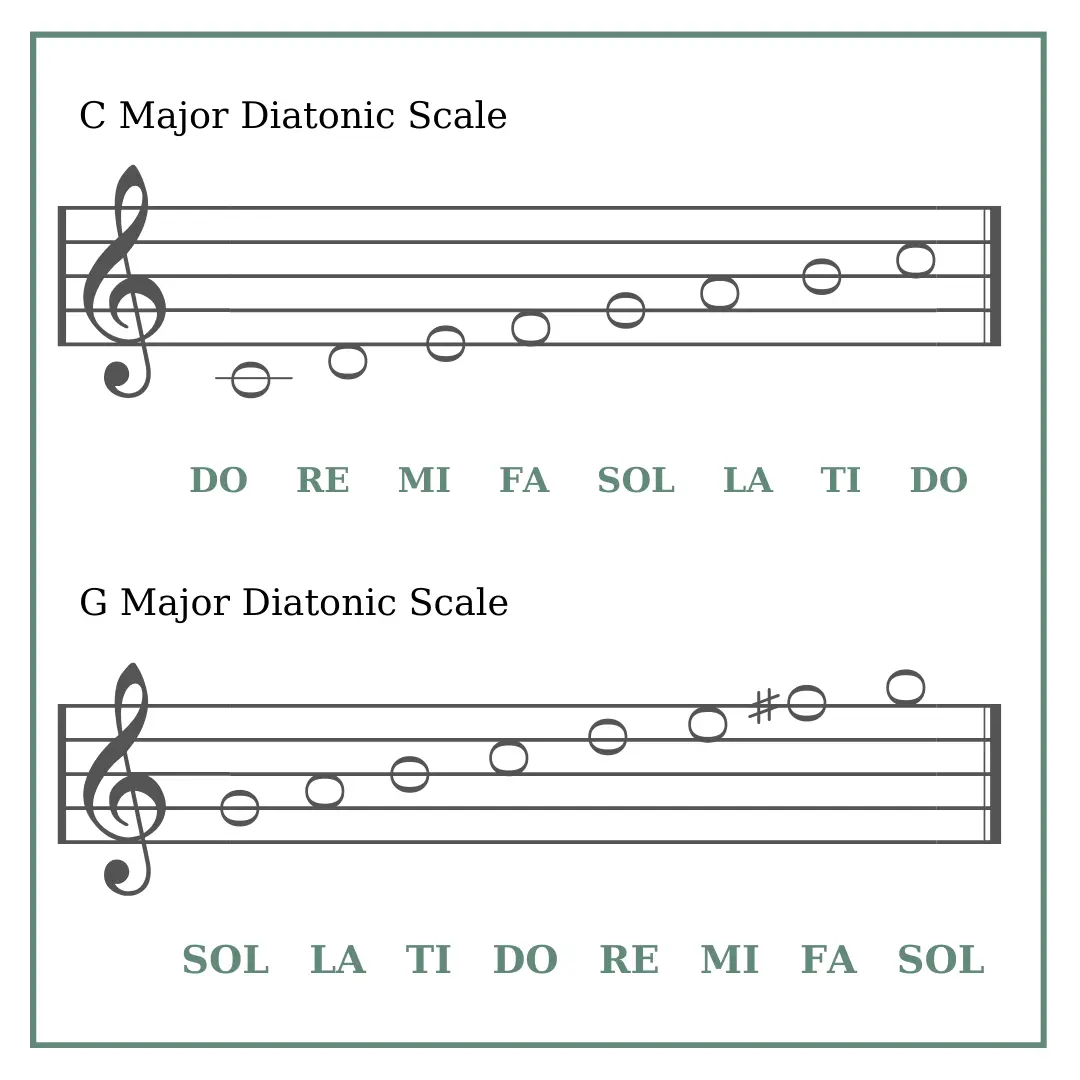
Find that notes C D E F G A B C replaces Do Re Mi Fa Sol La Ti Do.
Now, let me show you an example of the C Major Diatonic scale with Fixed Do.
If we were to write a G major scale or any other scale that isn’t C major, we must change the syllables. Here’s a G major scale with fixed Do. Notice how the syllables begin and end with a G, which is Sol, and how Fa, which symbolizes F, must now be interpreted as “Fi” or F#.
Solfege Syllables Hand Signs
The solfege hand signals were created by John Curwen.
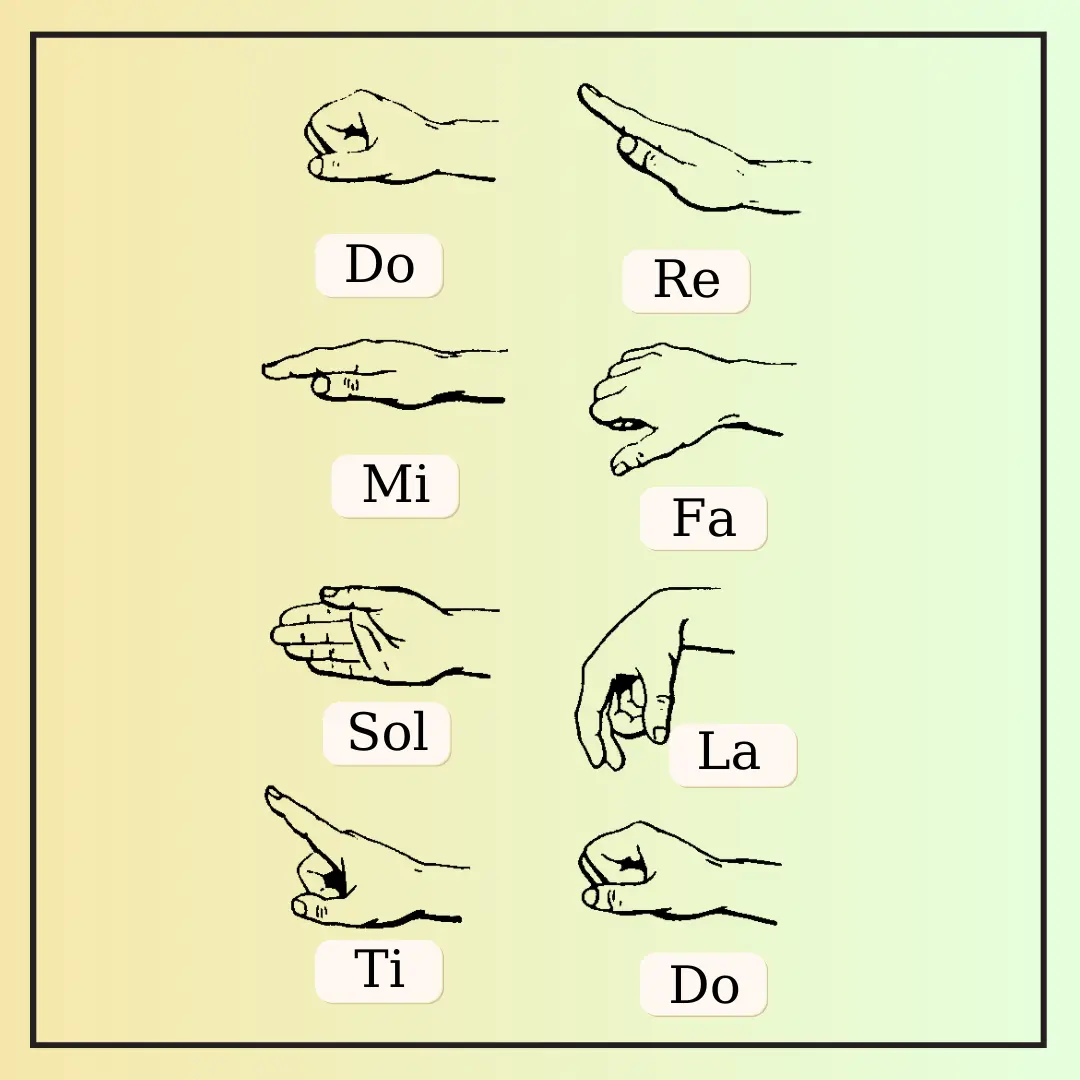
The hand signals are based on a basic concept. It is a hand form that the singer can make with his or her hand and use it to represent each tone in the seven note solfege system. The exercises are usually practiced with hand signs. Hand signs also makes it easier to learn solfege for beginners.
All of the hand signals can be performed with one hand and is very useful for singers who are new to the solfege technique.

Did You Know?
The solfege hand signals are also known as the Kodaly hand signs or the Curwen hand signs.
Final Points
Solfege serves as a tool that makes learning easy for beginners. I always recommend beginners to take professional help to get your basics right. Get in touch with us Musicmaster to learn more about solfege and other interesting concepts.
FAQs
What is solfege?
Solfege is a music education approach that teaches aural skills, pitch, and sight-reading of Western music.
How long does it take to learn solfege?
It really takes very less time to learn Solfege.
What are the benefits of learning solfege?
Solfege can be used for transcribing music, to improve Aural skills, detect the intervals in songs and so on.
How can I use solfege to sight-read music?
Do is always the tonic in the pitch they key starts in. It is easy to figure out the rest of the notes with solfege.
How can I use solfege to improvise or compose music?
It helps them to comprehend music theory better and has helped in singing and songwriting and it helps you distinguish intervals in melodies to improve quality of the melodies.
What are the different solfege systems? (Fixed Do & Movable Do)
Fixed do is a pitch notation system where “do” is fixed on absolute pitch which is the C. Movable do is a pitch notation system where “do re mi fa sol la ti do” are used to represent the pitches of a diatonic scale.
Related Blog: Understanding Dynamics In Music































